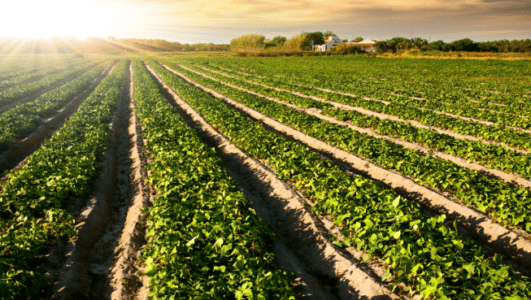Haryana Agriculture is a vital sector, contributing significantly to the state’s economy. To ensure optimal crop yield and combat pest infestations, agricultural experts provide valuable advice to farmers. This article explores the techniques and practices recommended by these experts.
Importance of Field Preparation
- Field Preparation for High-Value Crops: Meticulous field preparation is crucial, especially for high-value crops like cotton.
- Transitioning Between Crops: Agricultural scientists emphasize the importance of careful field preparation when transitioning from one crop to another.
Enhancing Soil Health and Pest Management
- Deep Plowing Post-Cotton Cultivation: Experts advise deep plowing at the end of February after cotton cultivation to reduce bird predation and eliminate harmful pests and viruses.
- Fallow Period Between Crops: Leaving fields fallow between crops helps eradicate detrimental pests and viruses, ensuring a healthier environment for the succeeding crop.
Combatting Rose Aphids and Millet Bugs
- Uprooting and Destroying Infested Cotton Stalks: To control infestations of rose aphids and millet bugs, farmers should uproot and destroy cotton stalks infested with bollworms.
- Prompt Eradication Measures: If infestations are detected, prompt and thorough eradication measures should be undertaken to protect the yield.

Img Src:-Ugaao
Post-Wheat Cultivation Practices
- Fallow Fields Post-Wheat Cultivation: Leaving fields fallow after wheat cultivation allows for natural decomposition of stalks and pathogen elimination, contributing to optimal growth of rice or other succeeding crops.
- Advisories Into April: Agricultural scientists recommend this practice well into April, particularly emphasizing deep plowing post-harvest for enhanced productivity.
Soil Composition and Irrigation Techniques in Haryana Agriculture
- Suitability of Black Soil for Cotton: Black soil is considered most suitable for cotton cultivation due to its high moisture retention capacity.
- Drip Irrigation for Watering: Employing drip irrigation methods can significantly improve yield.
- Optimal Planting Density: Planting rows densely, 45 centimeters apart, and plants 15 centimeters apart, with a seeding rate of 6 to 8 kilograms per hectare, can boost yields by 25 to 50 percent.
Conclusion
In conclusion, following the advice of agricultural experts is crucial for enhancing crop yield and managing pest infestations in Haryana Agriculture. By implementing these techniques and practices, farmers can improve their agricultural outcomes and contribute to the state’s agricultural prosperity.
Click Here For More Tips and Information
FAQs
- How can deep plowing help reduce bird predation?
Deep plowing at the end of February can help bury leftover seeds, reducing the risk of bird predation. - Why is leaving fields fallow between crops recommended?
Leaving fields fallow helps eradicate detrimental pests and viruses, ensuring a healthier environment for the succeeding crop. - What should farmers in Haryana Agriculture do if they detect infestations of rose aphids and millet bugs?
Farmers should uproot and destroy cotton stalks infested with bollworms and take prompt eradication measures to protect the yield. - Why is black soil considered suitable for cotton cultivation?
Black soil has a high moisture retention capacity, making it ideal for cotton cultivation. - How can drip irrigation improve crop yield in Haryana Agriculture?
Drip irrigation methods ensure efficient water usage, leading to improved crop yields.










